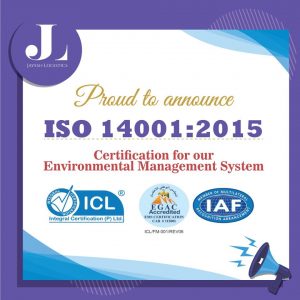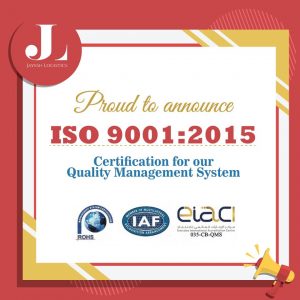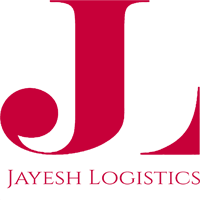
Importance of Total Quality Management (TQM) in logistics industry
June 10, 2020
WHAT IS LOGISTICS
July 3, 2020What is ISO?
‘ISO’ is an abbreviation for the International Organization for Standardization – an autonomous international body that generates norms to classify skilfully accepted method(s) of executing a particular assignment to guarantee efficiency and accuracy.
Notably, ISO establishes such criteria but is not accredited by external parties (not all ISO standards require accreditation). Certification merely classifies a corporation as conforming to a standard. There are 21,769 standards, with the most prevalent being quality management (ISO 9001) within the logistics sector.
How will ISO Certification aid your Transport and Logistics business?
ISO Certification in Travel and Logistics
Serving in the logistics and transport business means you should constantly offer value at once.
Transitioning to ISO Transport and Logistics Certification implies you are implementing a comprehensive framework for creating and enhancing the quality of your service, boosting corporate profit and reducing your carbon footprint.
Transitioning towards ISO Certification often assists you establish your performance business into the global economy and preserve a reliable name on the industry. You can also earn some bids in which ISO Certification is among the most important prerequisites for the offer.

Why should you trust your 3PL supplier is ISO 9001-certified?
Absence of restraint in the logistics industry about system implementation can lead to expensive mistakes. The ISO 9001 certification of a 3PL ensures its clients that every implementation dimension complies with rigorous performance specifications – either at the storage facility, on the way to a consumer or anywhere between them.
ISO-9001 lays out Quality Management System (QMS) specifications. The program records process measures to guarantee that goods and/or services satisfy consumer needs and also compliance criteria, if they are implemented. ISO 9001’s 8 guiding principles include:
Consumer focus
Leadership
Involvement of people
Process approach
System approach to management
Continual improvement
Fact-based approach to decision making
Mutually beneficial supplier relationships
Companies seek ISO 9001 certification to demonstrate to customers – and future customers – that they treat risk control of logistics very strictly and have taken great strides to achieve functional competence. ISO 9001 certification includes a long learning process that usually requires several months to finish – complete with investigations. Consequently, if you’re certain a firm is “ISO 9001-certified,” you can reach the conclusion that it is dedicated to reliability and has entered the time to back up that assertion.

Which is the ISO Certification to be used for Transport and Logistics Business?
1. ISO 9001 Certification
An ISO 9001 certificate puts forth that your business and organization are customer-centric and focused on providing constant quality and one-time service. This standard is recognized globally and allows you establish a procedure that is best for boosting the system ‘s effectiveness. It will help you strive towards continuous enhancements and help to make supply chains more efficient.
It is an international quality-management-systems (QMS) benchmark, certification has been mostly renewed late in 2015, and ISO 9001 Certification is displayed as ISO 9001:2015. In order to be released and altered, ISO 9001 should be resolved by a strongest portion of part of the world in order to become a Global Recognized Standard, that implies that the greater portion of the world ‘s nations validate it.
A summary of ISO 9001 Certification towards the end of 2017 indicates that the magnitude of affiliation that has performed a QMS remains constant given the overall subsidence.
There are numerous documents in the ISO 9000 community that support ISO 9001 Certification requirements: ISO 9000 explains the concepts and criteria behind ISO 9001, and offers advice on creating an increasingly successful ISO 9001 Certification QMS.
What does Quality Management System imply?
The Quality-Management-System, or QMS is a collection of processes, archives, strategies and methodologies that have been catalogued. This document structure describes the interior, which will control how your organization makes and transmits your policy and products to your consumer / client. The QMS must be customized to the affiliation ‘s requirement and the organization or service you are providing, and the ISO 9001 Certification offers a set of guidelines to help ensure that you don’t skip any essential aspects that a Quality Management System requires to be effective. SIS Certifications provide ISO Transport and Logistics Certification at the best rates.
2. ISO 14001 Certification
ISO 14001 principles will help you track and regulate the institution ‘s environmental effects by ensuring the effective use of natural resources, energy and excess, improving the brand identity and reputation. It will always give you an advantage over other contenders and assist you recognise market opportunities and resulting cost savings for additional revenue.
ISO 14001:2015 is the standard protocol indicating engagement in a sustainable Environmental Management System (EMS). ISO 14001 Certification provides a policy that a corporation / organization may follow, as compared to the establishment of preconditions for natural execution.
Some part of the ecological administration ISO 14000 Certification group of gauges, ISO 14001 Certification is a ready and able benchmark that organizations can verify. Synchronizing it with other guidelines on administration frameworks, most commonly ISO 9001 certification could further help achieve hierarchical goals.
ISO 14001:2015 promoting the rapid development of development and urbanization has created condition hazard from a variety of perspectives. Considering the global climate threat, soil degradation, contaminated water, sound contamination, the ISO 14001 Certification centres around the reduction of all kinds of contamination that recalls the legal and statutory needs which can boost the reduction of organic toxicity if consistent. ISO 45001 Quality Standard enables organizations to think about and track the environmental outcome, and minimises the adverse effect.




